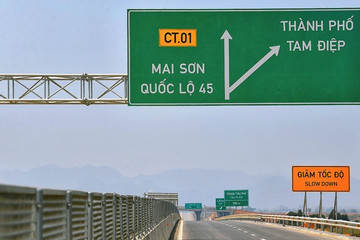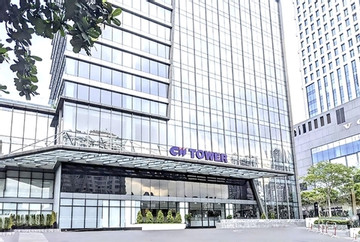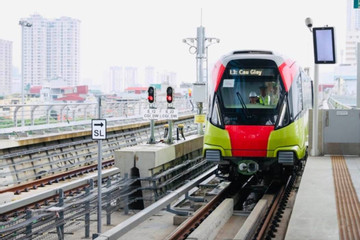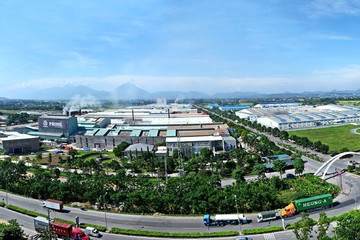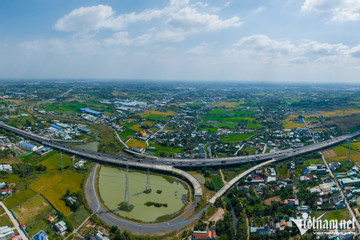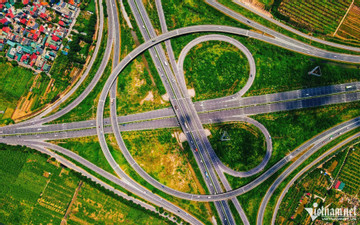- © Copyright of Vietnamnet Global.
- Tel: 024 3772 7988 Fax: (024) 37722734
- Email: [email protected]
infrastructure development
Update news infrastructure development
Hanoi prioritises rebuilding severely downgraded bridges
Hanoi will give priority to rebuilding and replacing weak and makeshift bridges in the 2024 - 2025 period to improve the capital city’s transport infrastructure for socio-economic development, according to the municipal Department of Transport.
Massive budget allocated for transport projects in 2024
Prime Minister Pham Minh Chinh has said the country will focus on transport projects this year, noting that most of the budget of VND657 trillion for public investments is for transport projects. The disbursement rate must be 95 percent, he said.
VN gains great achievements in developing highways
In 2023, Vietnam completed nine highway projects with a total length of nearly 500 kilometers and put them into operation, raising the total length of the highway network in Vietnam to 1,900 kilometers.
Infrastructure construction enterprises face cash shortage
Numerous enterprises engaged in capital-intensive sectors like infrastructure construction are facing challenging situations with limited cash resources.
Urban railway projects going slowly, investment capital increase required
Problems are occurring in most urban railway projects: the implementation has been slow and the required investment capital has had to be raised multiple times.
Hanoi reserves thousands of hectares of industrial land for foreign investors
Vietnam has become a base for large foreign companies. Industrial real estate is believed to be a profitable business with great opportunities for development.
Hanoi stops 91 Build-Transfer infrastructure projects
Ninety-one projects expected to be implemented under the build-transfer (BT) mode have been told to stop implementation.
Vietnam eager to complete integral transport infrastructure to attract FDI
Local authorities at all levels are eager to implement construction of transport infrastructure up and down the country.
Cumbersome procedures destroy creativity
Principles and regulations are set to serve development, but, ironically, many of them have become obstacles that hinder development.
Expressway network expected to create breakthroughs in Mekong Delta
A lot of expressway projects have been implemented and are about to start construction, creating a big opportunity for the Mekong Delta to vigorously develop.
PM wants 3,000 kms of expressway completed by 2025
Prime Minister Pham Minh Chinh has told the Ministry of Transport to complete the construction of 3,000 kilometers of expressway by 2025.
Expectations are high for Belt Road No3 in HCM City
The 76.34km Belt Road No3 project, which runs through HCM City, Binh Duong, Dong Nai and Long An, is the largest of its kind in the south.
Infrastructure pinpointed to spur socioeconomic fortunes
The Vietnamese government is continuing to promote infrastructure development with the construction of expressways and new bridges, in efforts to spur socioeconomic development and welcome new private investment.
Master plan for Mekong Delta focuses on infrastructure development
The Master Plan for the Mekong Delta designed for 2021-2030, with a vision to 2050, is focused on infrastructure development.
Should Vietnam build a 200, 300, 500, or 1,000 km/hour railway?
We have to make an important choice which will determine the future of the transport sector and give a driving force to economic development.
Transport Ministry to submit US$58bil. north-south high-speed railway project to Politburo
According to the Ministry of Transport (MOT), the North-South high-speed railway project is expected to be submitted to the Politburo in September.
The most important 'economic corridors' for next 10-30 years
The national planning draft for 2021-2030 with a vision towards 2050 focuses on the formulation and development of economic corridors, dynamic zones, large cities and economic zones associated with the national infrastructure framework.
Experts urge caution in early land investments based on infrastructure plans
Businesses and individuals seeking to profit from land and property investments in areas near infrastructure projects have been warned about the risks of committing before the full project details become clear.
Localities lack capital for development, but misuse public land
Public land and assets valued at multi-trillions of dong have not been fully utilized and many land plots have been left deserted for years. Still, localities continue to complain about the lack of capital.
Public-Private Partnership law offers little benefit to public projects
The Law on Public-Private Partnership (PPP) has been up and running for over one year and a half, but it makes no difference to domestic investment so far, according to experts.


